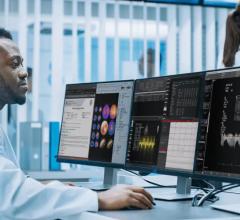October 20, 2008 - Cardiac Science launched Quinton Q-Tel RMS 3.1, a new and simpler electronic reporting system that reportedly allows caregivers to focus more time on patients.
The system is said to reduce the amount of paperwork common to cardiac rehabilitation programs and makes data transfer to hospital information systems (HIS) and electronic medical record (EMR) systems easy.
Based on cardiac rehab managers’ input, the company said it designed four new reports to streamline reporting and create more time for patient care. These reports support American Association of Cardiovascular and Pulmonary Rehabilitation (AACVPR) certification, the company said.
The Q-Exchange option enables seamless data transfer between Q-Tel and HIS/EMR, further reducing clerical time. Q-Exchange works with XML or HL7 technologies. Additionally, Q-Tel 3.1 includes the following reports:
- Patient Care Plan – Shows an individualized patient plan of care covering the exercise, nutrition, education, and psychosocial factors required by the AACVPR Program Certification Application, all in one place.
- Patient Intake Assessment – Documents the assessment of every patient in the clinical, behavioral, health, and services domains, and captures information for all four domains on one form.
- Patient Query Report – Can perform custom queries of the patient database to help identify attendance counts, referring physicians, or patients who match other specific criteria. A simple point-and-click interface reveals the answers to these and countless other queries.
- Customized Patient Outcomes Graphs – Creates individualized graphs of the outcomes parameters needed for each patient. The most relevant parameters are charted – and can be altered in real-time – to show the most relevant information for each patient.
Q-Tel is configurable for additional dedicated workstations or for extra monitoring stations as class sizes increase. The Pocket Assistant allows the rehabilitation team to input session parameters from anywhere on the floor, allowing for more personal interaction with patients.
For more information: www.cardiacscience.com


 May 15, 2024
May 15, 2024 








